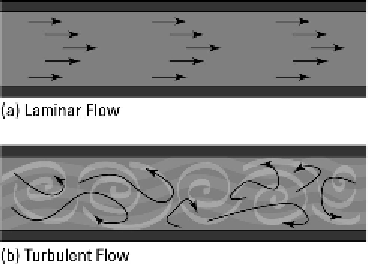Geology Reference
In-Depth Information
Measuring stream characteristics
Scientists describe the movement of a stream flow using measurements of how quickly
the stream moves and how much water it carries downhill. These characteristics —
gradient, velocity, and discharge — are important in understanding how streams carry
sediment and create the geologic features I describe in the following section.
Gradient
A stream's
gradient
is the downhill slope that it travels across. Gradient is measured as
the meters of elevation lost over a kilometer of distance traveled. The gradient of a
stream is determined by the steepness of the channel, which is defined by the topo-
graphy of the landscape. Stream gradients in mountainous areas are likely to be steeper
than stream gradients across a flat, lowland region.
Velocity
The distance water travels in a given amount of time is a stream's
velocity
. Velocity is
measured as meters per second and can vary within the streamflow. Water in the stream
closer to the channel edges moves at lower velocity as a result of brushing against rocks
and sediment that slow it down (due to friction). Water in the center of a streamflow hits
fewer obstacles and moves at higher velocity.
Discharge
A stream's
discharge
is the amount, or volume, of water that passes a given point in a set
amount of time. Because discharge is a measure of volume, the width and depth of the
stream, as well as the velocity (or speed), are factored into this measurement. Discharge


